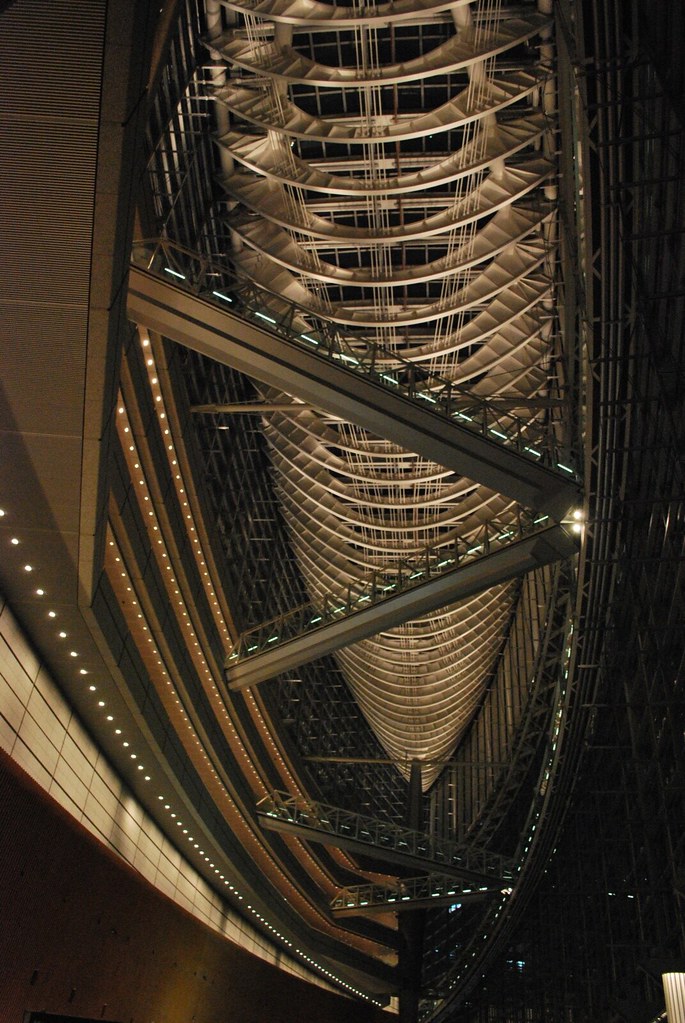
Sumida Culture Factory, Itsuko Hasegawa, 1994. Exhibition space, library, planetarium, restaurant and multipurpose hall.
Itsuko Hasegawa is the first famous female architect in Japan, she is contemporary with Toyo Ito (both born 1941) in many ways. Her career however is shorter, and today less notable. This building as well as its contemporary projects eventually leading up to the master piece of the style Sendai Mediateque by Toyo Ito. She worked as the assistant of
Kazuo Shinohara at Tokyo Institute of Technology. Shinohara also deeply influenced the work of among others Toyo Ito with whom Kazuyo Sejima of SAANA worked before she started her own firm. (For more of this kind of genealogy see
After the Crash: Architecture in Post-Bubble Japan
by Thomas Daniell, an excellent collection of essays about Japanese architecture.) This isn't just gossip but it also provides a framework for understanding the contemporary context of a building.
When I visited it, woefully unprepared, suddenly a lot of things came together. The history of architecture suddenly seemed a little bit more clear. This is partly why I choose this building but for the most part it is because I like it.

























